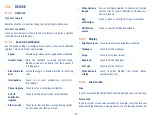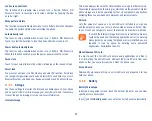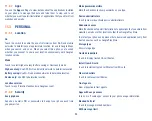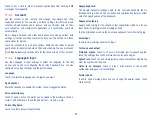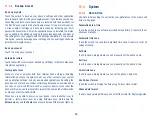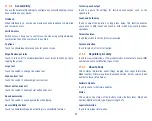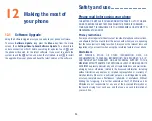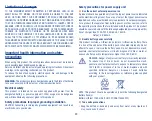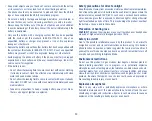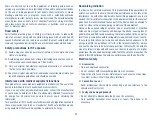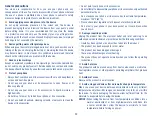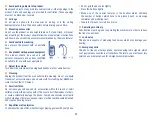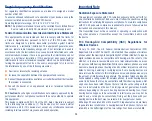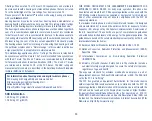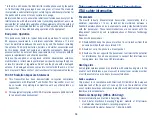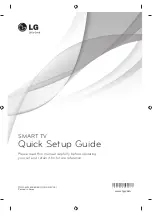
56
* In the U.S. and Canada, the SAR limit for mobile phone used by the public
is 1.6 Watts/kg (W/kg) averaged over one gram of tissue. The standard
incorporates a substantial margin of safety to give additional protection for
the public and to account for any variations in usage.
Normal condition only to ensure the radiative performance and safety of the
interference. As with other mobile radio transmitting equipment, users are
advised that for satisfactory operation of the equipment and for the safety of
personnel, it is recommended that no part of the human body be allowed to
come too close to the antenna during operation of the equipment.
Body-worn Operation
This device was tested for typical body-worn operations. To comply with
RF exposure requirements, a minimum separation distance of 15 mm
must be maintained between the user’s body and the handset, including
the antenna. Third-party belt-clips, holsters, and similar accessories used
by this device should not contain any metallic components. Body-worn
accessories that do not meet these requirements may not comply with RF
exposure requirements and should be avoided.
Only use the supplied or an approved antenna. Unauthorized antennas,
modifications, or attachments could impair call quality, damage the phone,
or result in violation of regulations. Do not use the phone with a damaged
antenna. If a damaged antenna comes into contact with the skin, a minor
burn may result. Please contact your local dealer for replacement antenna.
FCC RF Radiation Exposure Statement
This Transmitter has been demonstrated co-location compliance
requirements with Bluetooth
®
and WLAN. This transmitter must not
be co-located or operating in conjunction with any other antenna or
transmitter.
This equipment complies with FCC RF radiation exposure limits set forth
for an uncontrolled environment.
Telecommunications & Internet Association
(TIA) safety information
Pacemakers
The Health Industry Manufacturers Association recommends that a
minimum separation of 15 cm (6 inches) be maintained between a
handheld wireless phone and a pacemaker to avoid potential interference
with the pacemaker. These recommendations are consistent with the
independent research by and recommendations of Wireless Technology
Research.
Persons with pacemakers:
Should ALWAYS keep the phone more than 15 cm (6 inches) from their
pacemaker when the phone is turned ON.
Should not carry the phone in a breast pocket.
Should use the ear opposite the pacemaker to minimize the potential
for interference. If you have any reason to suspect that interference is
taking place, turn the phone OFF immediately.
Hearing aids
Some digital wireless phones may interfere with some hearing aids. In the
event of such interference, you may want to consult your service provider,
or call the customer service line to discuss alternatives.
RoHS compliance
This product is in compliance with Directive 2011/65/EU of the European
Parliament and of the Council of 7 January 2003, on the restriction of the
use of certain hazardous substances in electrical and electronic equipment
(RoHS) and its amendments.
Electronic Recycling (Within USA Only):
For more information on Electronic Recycling, please:
1. Visit Alcatel Electronic Recycling Program website at http://www.
alcatelonetouch.us/electronic-recycling-program, or
2. Call Alcatel US Customer Support at 1-855-368-0829.
Summary of Contents for pixi bond
Page 1: ...English CJA1GD0ALAAA...

